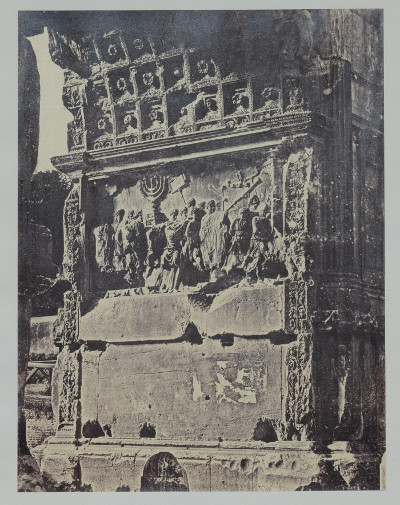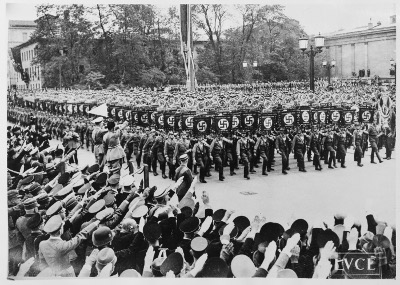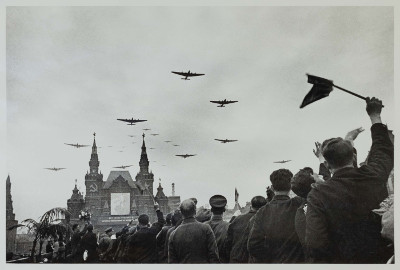
Arch of Titus, Rome
Arch of Titus, Rome
Eugene Constant
French, 1848-1852
Photograph, salt print
11 5/16 in. x 8 11/16 in. (28.8 cm. x 22 cm.)
1988.5
Erected in 81 CE, this arch memorializes the emperor Titus’ military success against the Jews and the Roman capture of Jerusalem in 70 CE. The subsequent triumphal procession consisted of the Senate, followed by musicians and spoils such as the menorah illustrated here, as well as prisoners of war, the victorious army, and general. The direction of the figures depicted in this high relief carving mimics the path of the procession onward to the final destination of the ancient Temple of Jupiter at the Capitoline. The overlapping of figures’ heads alludes to the mass amounts of both spectators and participants who gathered to celebrate Roman militaristic might. This public event encouraged social cohesion through a shared experience promoting Roman pride, a framework later borrowed and refashioned by 20th century dictators.
(B. Wrubel)


Nazi Parade with Chancellor Hitler and Premier Mussolini, Munich
Nazi Parade with Chancellor Hitler and Premier Mussolini, Munich
Worldwide Photographer
German, 10/4/1937
Photograph, gelatin silver print
7 in. x 9 1/8 in. (17.78 cm. x 23.18 cm.)
Gift of Isaac Lagnado, Class of 1971
2010.68.158
This photograph was taken during Mussolini’s visit to Munich to celebrate the alliance between Nazi Germany and Fascist Italy. The pomp and circumstances surrounding the state visit proved to be an opportune moment to demonstrate the might of the German military and the union between the two nations, as captured in photography, film, and contemporary media coverage. Both the Nazi and Fascist party leaders had deep admiration respectively for the ancient Greek and Roman world and sought to appropriate ancient military processional practices and displays for propaganda.
(B. Wu)


Red Square Parade for the Chelyuskin Polar Expedition
Red Square Parade for the Chelyuskin Polar Expedition
Mark B. Markov-Grinberg
Russian, 1934 (printed later)
Photograph, ferrotyped gelatin silver print
14 3/4 in. x 22 in. (37.47cm. x 55.88 cm.)
Gift from the Collection of Peter S. Chatzky, 2010.57.20
The Red Square Parade here depicted was a celebration for those safely returning from the Chelyuskin Polar Expedition in 1934, launched a year before. The crowd gathers together to both witness the public display and to show support for their nation’s military. Typically, parades in the Red Square were held for celebratory occasions in Russian history or to promote the regime. Airplanes were a regular feature in the parades during this time, used as a display of the Russian technological advancements. The most significant of these occasions, which became an annual tradition, was the military parade held on May 9th, 1945 after Nazi Germany was defeated in World War II. In these parades, thousands of soldiers march together in an effort to emphasize patriotism in Russia.
(M. Brown)



